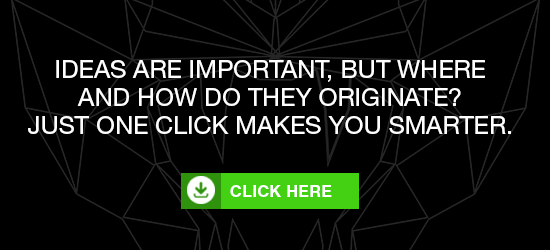
Schindler Parent > Blog > Not Without My Idea - Why Advertising Needs Ideas
It keeps getting more difficult for advertising to gain the customer’s attention. Facebook, Twitter, YouTube, TV, radio, posters, and so many more – daily confront the customer’s eye with endless amounts of information. If you want to stand out, there are two options.
One: You need a big budget. By plastering every billboard with your advertising, appearing in the prime-time advertising blocks, and offering many contact points online – you ensure that the customer is bound to see you. There is simply no escape. This, however, is quite costly and therefore only feasible for a handful of large corporations. Besides, the first option is even more powerful in combination with the second one.
Option two is a great idea. Even with a smaller budget, it can lead to enormous success. An idea transforms passive consumers into active participants in communication. This generates a bond between the customer and the brand as well as the product. One might say that ideas are an instrument to develop target group loyalty.
I will try to make it a little clearer. If the advertisement consists of a motive, this motive might look great and might even be executed brilliantly. However, if the image is merely informative, and text, headline, and copy are merely informative as well, it will hardly have any effect on the consumer. The consumer might even like it, but will have forgotten it in less than five minutes. It is different when you take the same picture and add an idea to the text. This ensures that the viewer’s brain forms a connection with what happens in the image, the synapses start to pop, and involvement is created. That’s when it’s saved in the customers brains.
What exactly does it mean though, when advertising has an idea? Simple. It is not just informative, but it strikes an emotional chord. A hook that catches the viewer. An edge that guarantees that advertising is not just smooth and slips away. The idea calls on the viewer to think about what they saw and what its message might be. A good example is Benetton’s famous Unhate campaign. The Unhate thought could have simply been presented through a kissing couple. That would have been clear enough. But this kind of scene would already be forgotten when the viewer keeps walking. However, if the kissing couples are Angela Merkel & (Nicolas?) Sarkozy, Barack Obama & Hugo Chávez, or the Pope & an imam, the viewer will get stuck on it.
The idea does not necessarily have to be in the text. There are a range of ways to ingeniously integrate it:
1. In the headline.
2. In the picture.
3. In the interaction between headline and image.
4. In the current time.
5. In the season.
6. In disrespect towards a person to be respected.
7. In breaking ethical conventions.
8. In the context of the application of the product.
9. In breaking the category rules.
10. In knowing the target group’s collective knowledge.
11. In knowing the medium’s technical possibilities.
12. In the effect of the product.
13. In knowing the target group’s critical attitudes.
14. In knowing the target group’s fanaticism.
15. In knowing the target group’s weirdest rituals.
16. In combining some of the points above.
You would like to hear more specific information on one of these points, or maybe you disagree? I can’t wait to read your comments and get involved in an interesting discussion.
